One of my partners has, over the time I’ve known it, gotten quite heavily into photography. It’s kind of not really my place to say this, I’m not its doctor or anything like that, but I am genuinely glad to see this development1; she has a job and a bunch of other interests that would frequently lead to someone not getting out much, so I’m glad it balances that with a bunch of different hobbies that often involve going outside, doing physical exercise, talking to people and taking in the outside world. Personally I don’t have much room in my head for a lot of the technical aspects of photography that she gets really into–details of lenses and different types of mount are something I struggle to keep track of–but artistically I appreciate the results, both in the form of beautiful photographs that it takes and in the stock of decent camera equipment that I get to borrow sometimes. By listening to her opinions and knowledge and ideas, and then fiddling around with the cameras she uses, I get to approximate one of the ways I actually learn effectively; half understanding the theory of a concept, then having a physical example to play with and figure out what it actually looks like in practice.
A/N: While reading this, the partner in question commented that "none of [its] camera equipment is decent". Which I can understand, given its previously expressed opinions on the camera I usually find myself borrowing, but the gear in question is at the very least nicer than anything I have used in the past.
The idea that everyone works differently makes sense to me. People are physically different in so many ways, people are emotionally different in so many ways, so it seems obvious that people are mentally different too, right? Which I think is true in a lot of ways. In primary and high school I remember hearing a lot of talk about different ways of learning, how some people took in information best through reading or listening to speech or writing things down or drawing them, or purely theoretically or with real examples or through projects that required understanding in order for a student to build on it. Which was then used to explain away schools failing as an educational system, because if everyone agrees the current system doesn’t work, but they also accept that the student-tailored version that would work is unachievable because the resources aren’t available, then obviously there’s no point trying to fix anything. Or at least, that was how the whole conversation looked from the point of view of a student trying to navigate the resulting mess.
And if everyone learns differently, and everyone thinks differently, and everyone has different experiences, then it makes sense that the rest of how people work mentally is just as ever-variant. Sure, there are common endpoints–most people enjoy having friends and people who care about them, most people like to eat good tasting food, most people wish they were the other gender, most people want to die–but the machinery behind those common points is messy and weird and different for everyone. That makes sense to me. And within that framework, I understood the idea of various forms of neurodivergence as… a different set of endpoints, right? This is a person that is Different, which means the outside surface of their mind is a shape that doesn’t match The Normal Shape, and that doesn’t say anything about the inside of their mind because those are all weird and different anyway. And no one ever told me that my mind wasn’t The Normal Outside Shape, so I didn’t really think about it past that. After all, how can a person’s brain work differently when everyone’s works differently already?
One of the parts of photography that makes the most sense to my particular way of thinking is the effect of focal length. This is the distance between the focusing glass in your lens2 and the sensor that actually captures a photograph. Increasing your focal length “zooms” your image; as the sensor stays the same size, but the focal length increases, the angle of light coming into the lens that will hit the sensor gets smaller. Something that previously took up a tiny fraction of your viewing angle now takes up a comparatively larger space in the image you are capturing, so it appears larger and you get more detail.
Longer focal length lenses will give you a much smaller angle of view, although the exact angle you get depends on the size of your sensor as well.
This has a bunch of other cool effects, some of which stem from the fact that if your viewing angle is smaller, you need to be further away to fit your subject in frame. This changes the depth of your image and even just your subject! If you are taking a front-on photo of a cat which is about 30cm from one end to the other, and you are taking that photo with a wide angle lens from 30cm away, the depth of your subject in the image is the same as how far away it is. But as you switch to a longer focal length and step back to fit the cat in your new viewing angle, that ratio changes; if you’re now 3m away, the depth of your subject is now only 10% of how far away it is. This is visible through the lens as a kind of flattening, as though the cat you were originally taking a photograph of has been squashed into being 3cm long when actually you’re the one that changed.
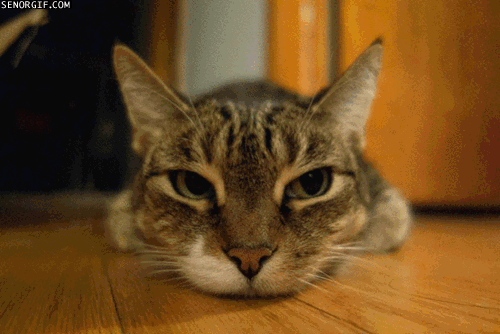
Kitty squish :)
A lot of people on the internet have opinions on focal lengths. Common wisdom is that 50mm about matches the human eye, or that’s what 50mm lens fans claim. My partner has often claimed that 85mm is their favourite focal length, and having seen the photos it takes with that lens I can see why; that said, my personal favourite is the (up to) 200mm lens that she gives me to use sometimes. Shooting in 200mm is just fun, it’s a very narrow field of view with a very short depth of field, so the volume of space that is visible and in focus for any given shot is tiny. Where wider lenses take a photo of a scene, the 200mm lens takes a photo of an object. Which means when I’m using it I have to look at the world in terms of the individual parts that make it up, rather than whole scenes or arrangements, and consciously looking at the world that way is really interesting to me.
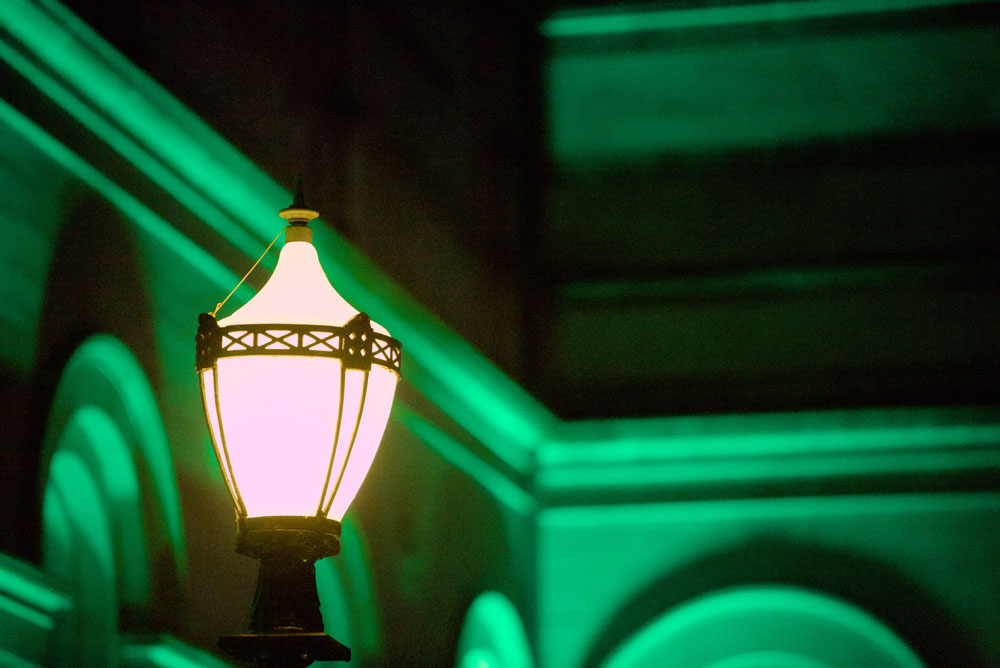
A 200mm lens lets me take photos of streetlamps without a ladder, which is pretty cool
Six months into my first full-time job, I had a performance review to give me an idea of what that would be like in the future when it actually mattered. One thing that came up in that was my difficulties in effectively communicating with my coworkers sometimes, which my manager kind of put down to autism, but in a very… assumed way? It wasn’t “you might be autistic”, or “have you been diagnosed as autistic”, it was treated as a fact, the same way a person might say “you talk about struggling to talk to your coworkers, which makes sense because you’re in Australia and you only speak German”. I’d never talked to this person about the topic, and I’ve never been diagnosed with anything in that region, so to have it brought up with that kind of certainty was a weird and eye-opening moment.
When I brought it up to my high school friends a while later, one of them made a kind of deeply concerned face, like I’d just told them I was worried about maybe having some horrific virus, and said “I think if it’s not causing problems for you, just don’t worry about it.” Which… is correct, but I had at no point until then considered worrying about it at all. It’s not something that concerns me, it’s just that thinking about myself as “neurotypical” led me to a bunch of weird conclusions about myself and the world, and thinking about myself as “maybe has autism but not formally” has given me a lot of useful tools and perspective ideas that make the world make more sense. As it turns out, a lot of things get clearer when you give room to consider that you look at the world through a different lens to most people.
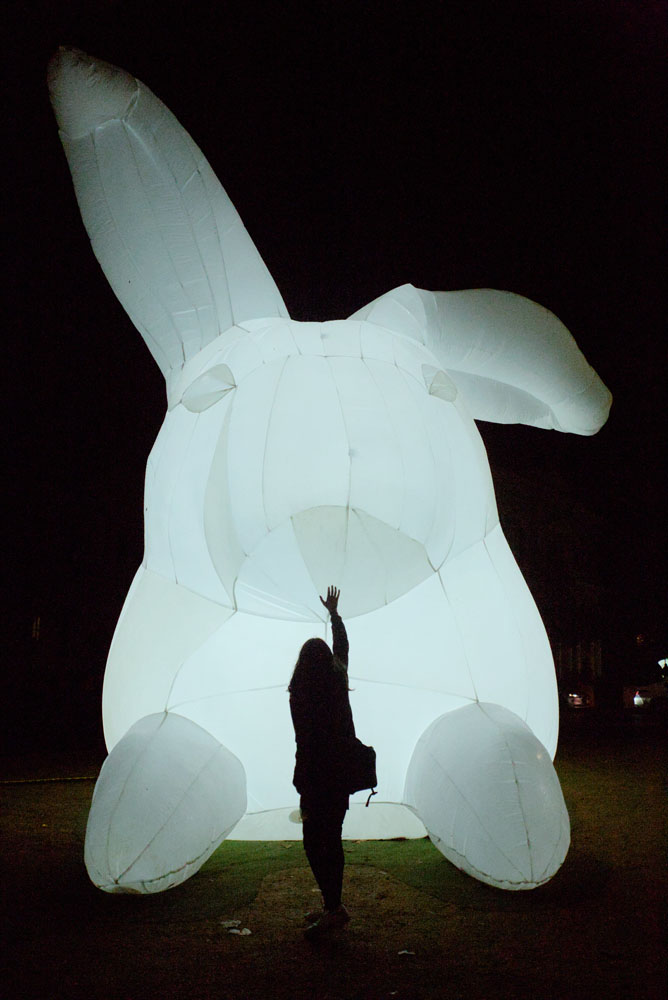 |
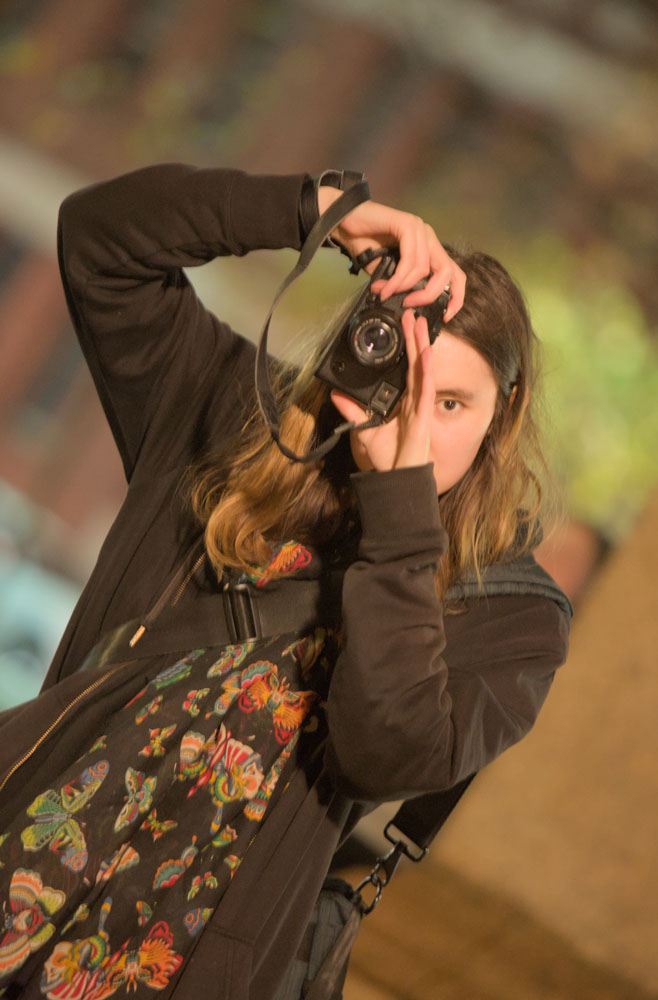 |
Two pictures of the same girl; the left at 24mm, the right at 200mm.
When taking a photograph, it is important to get your exposure right. Exposure is essentially how light or dark your photo is, and to some extent it’s a matter of taste; I have been dragged into the cult of taking photos a step underexposed, it just looks nice. Realistically, the correct range of exposure is anything that captures all of the information in your image. As long as you have that, you can edit the photo later to make it darker or lighter or give it stronger highlights or deeper shadows.
I learned about exposure from my partner, which was an interesting process, because one of its favourite subjects for taking photos to demonstrate these things is me. Which is kind of a weird experience; I don’t usually like photographs of myself, but she does, apparently. And somehow, she takes images of me that feel… separate from me as a person, somehow? A lot of the photos it’s taken I would feel kind of uncomfortable with, usually, but I don’t because the moment it takes a photo, that photo is her artistic creation and it doesn’t feel connected to me, any more than a photo would be mine because I was holding a tripod steady. I’m not a contributor to the photograph in any real sense, I’m just some person helping out. And through that separation, I can appreciate pictures that happen to be of myself in a way that I can’t really when it’s me taking the photo, which is an odd feeling but kind of nice.
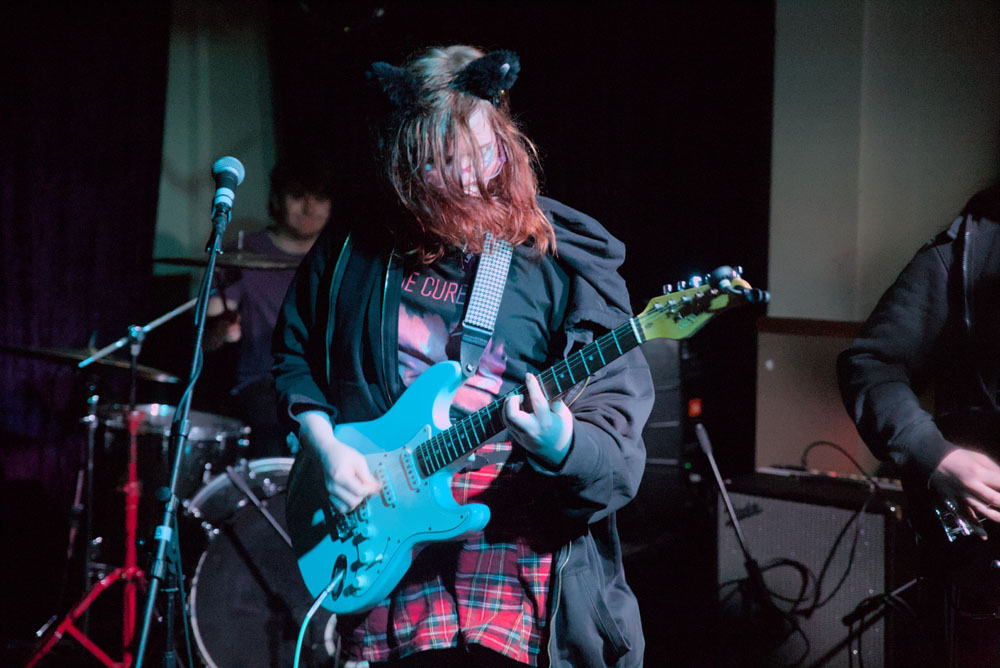
Despite the mental separation I am not really fond of the idea of putting those kinds of photos in this article, so surprise! Here's a photo of my cool music girlfriend!
Exposure is controlled by three things; the amount of light coming into the camera (which is controlled by the size of the aperture, the hole in the lens that light comes in through), the sensitivity of the camera sensor, and the amount of time the sensor is collecting light for (the shutter speed). It’s called exposure because, well, you’re exposing the sensor to the light, or if you use film you’re exposing the film to light instead. These three elements can be controlled basically independently most of the time, within a range, to get your exposure right. But they all have downsides; making the aperture bigger lets more light in but narrows the depth of field so less of your image is in focus, increasing the sensitivity of the sensor means it will react more to light but will also collect more random noise to add to the image, and taking a longer exposure gives your sensor more time to capture an image but also requires that your camera and scene are perfectly stationary for a longer period of time.
A/N: Camera partner noted here that what you change is not actually the sensitivity of the camera sensor, but the gain applied to the data recieves (which is a fact I was conceptually aware of, but too lazy to try to explain correctly). When I asked about how this applies to film, she made a very pained face and said "...ehhh, close enough?"
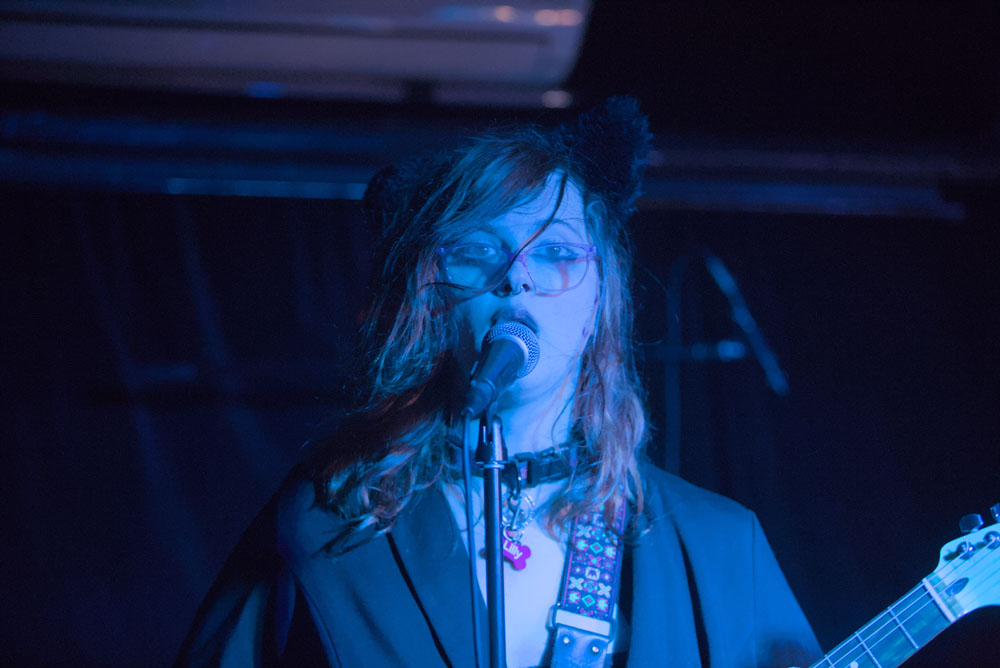
This image is shrunk down and a little compressed, but if you click on it, it's linked to the higher resolution version. Zoom in on the background, notice the speckling of colours that shouldn't be there - that's the signal noise that comes from too high a sensitivity. Now understand that this image already has a denoising filter applied as heavily as I was willing to use it, and that this camera supports sensitivity settings that are four times higher than the one this was taken at.
This is so funny to me, I love this kind of thing. It feels like the universe’s built in game balancing nerf for photographers. Physicists get “the more you know about a thing’s position the more unknowable its movement is and vice versa”, trans people get “you can have one hormone or the other hormone but if you try to not have either your bones stop working”, and photographers have “you can’t max out any of these ways of getting light in your camera because they all have a different debuff for increasing them too far”.
I have kind of shaky hands, so I can’t really do the long exposure thing. I usually end up going with the wide aperture, since I’m okay with only having the subject of a photo in focus, and then boosting my ISO (sensitivity) to make up for poor lighting conditions because I kind of like the fucked up sensor noise in images. And it’s a good thing I am okay with those drawbacks, because a lot of the time my subjects are on stage, jumping around and playing various instruments in absolutely awful lighting conditions, so I don’t know how I would go taking photos of them otherwise. Even as it is, it's a struggle to get anything good a lot of the time.
For some cameras, the image you see through the viewfinder is projected from what is actually being seen by the sensor, so it reacts to changing settings on the camera and represents what your image will look like when you take the photo. But sometimes the view from the viewfinder is actual light through the lens, and then you’re on your own a little bit; your view is using the aperture of the lens, which probably isn’t actually tightened when you’re looking at it, and you see with the effective shutter speed and ISO of your own eye, which is of course adjusting constantly to make sure you can see. This basically goes one of two ways. You can take test shots of the same thing, changing your settings and checking the photo to see how the exposure turned out, which gives you full control but can take a while. The other option is to set one or two of your three parameters, then have the camera control the rest and try to figure out a good exposure on its own. This usually works okay, camera tech is pretty good these days, but it’s a little weird feeling to actually do; you can’t see the world the way the camera is, so you just kind of have to trust it to do its job from its own perspective.
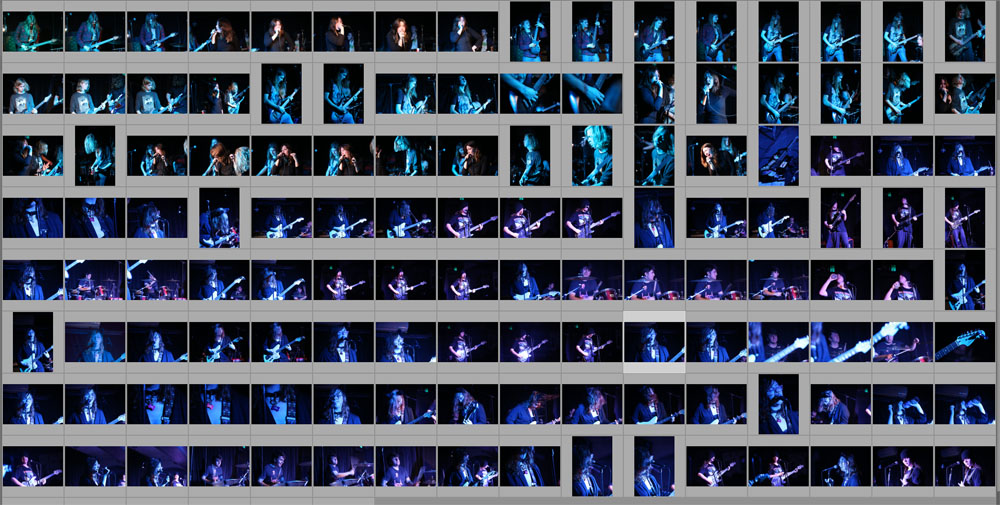
I tend to set my camera to take photos at about one stop underexposed (which is to say, with half the "ideal" amount of light). This gives me dark backgrounds, which I like, and means my camera gives me a faster, more manageable shutter speed.
A lot of people I talk to have kind of poor self esteem; no one appreciates their work, art, writing, ideas, self the way they should. It took me a long time to actually internalise that I was one of those people, and having done so doesn’t actually help with changing that perspective. I still think the things that I make suck, but at this point I do my best to entirely ignore my own perception because it’s corrupted and tainted and I can’t trust it. So I just… kind of have to trust other people, right? Some people like the things I write, sometimes, and some of them enjoy my art, or music, or the other things I create. Or possibly they’re lying to me, but then it becomes a question of whether I actually think the people I love and trust are coordinating to manipulate me into embarrassing myself by sharing things that are actually awful. And I don’t think the people I love and trust would do that to me, because I love and trust them, so I end up believing them even as every part of my own mind screams otherwise.
A related problem is that this same self perception bias is harder to shake when applied to… well, myself. Like many trans people I’m not exactly a fan of the way I look, and it feels weird to me that other people might? A lot of the time I tend to dress like I think I'm hot as fuck, because it's fun and I like to roleplay as someone with more confidence than I have, but it's always with a kind of irony to me. I can't see myself as an object of desire, so presenting myself as one is an act of humorous deconstruction of societal beauty standards. But then someone I play roleplaying games with asks to talk to me in private, or a friend plainly mentions something they thought I knew, or I go to say goodbye to my musician friend after a show and she asks to kiss me, and I am sharply reminded that apparently other people do see me that way, and it catches me off guard every time.
A handful of times in the past this has been a really uncomfortable experience, but… since transitioning, mostly, it's become a lot easier to process. Mostly I think it's down to the little bit of confidence I actually have now, but it probably helps that at some point in 2020 I started actually being attracted to people myself, which helps to contextualise it, at least3. Forming experience with relationships has lessened the helpless feeling a little, and with everything else I can at least get through that moment without the sickening dread of anticipation or the jolt of panicked understanding any more. But there’s still the part of me in the back of my mind that, free from any frantic or unpleasant emotions, idly questions “okay, but why?”
… But then I try to look at myself with an outside lens, as much as any person can do that. I think about the person I strive to be to the outside world, and I try to not focus on the ways in which I fail to be that girl and think about the times I got it right. I think about the parts of the people I love that I can also see in myself emotionally, and the people I find physically beautiful despite, or even thanks to, sharing some of the physical qualities that make me hate my own body. I look at some of the photographs that my partner takes of me, and… for a moment I can almost see it. I’m not actually arrogant enough to be attracted to myself, but for a moment I can see how someone would be.
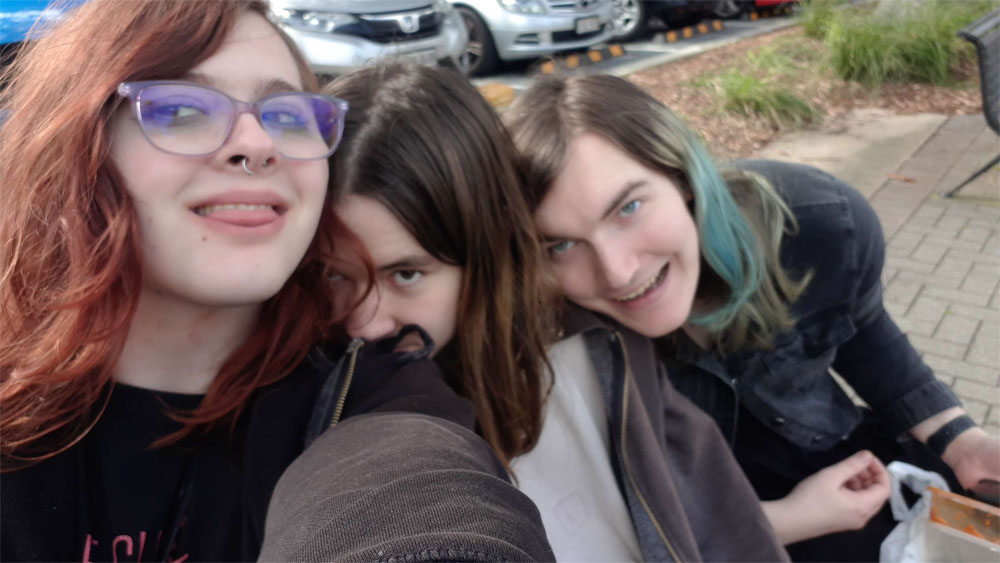
hehehehehehehehe ↩
In a lens with multiple optical elements, the focal length is determined by the theoretical position of a single element which would replicate the optical effects of the whole structure. I think? Idk it’s been like 9 years since I did year 12 physics. ↩
Better understanding of how human attraction actually works obviously plays a huge part here - I always got the impression that it was mostly aesthetic->physical/sexual followed by personal->platonic/romantic, and as far as I understood, I just didn’t experience the first and only really got the second on a platonic level. Developing an actual attraction model of my own that I can directly analyse shows that this is not always the case; firstly because types of attraction are much more mixed and balanced than I was led to believe, and secondly because sources of attraction generate different forms of attraction in a more spread out and twisting complex manner than I originally modelled them. For example; while I have decently strong aesthetic/physical preferences that lead me to usually describe myself as a lesbian, most of my attraction to people is based on various aspects of their personality. Platonically and romantically this mostly maps to “do I like this person” in the usual, oft-stereotyped ways, and physically it mostly relates to the particular interests a person has and how they correlate to my own; and, as I have learned to my slight surprise over the last several months, personally being one of those particular interests turns out to be a stronger factor in that than I had previously thought. ↩